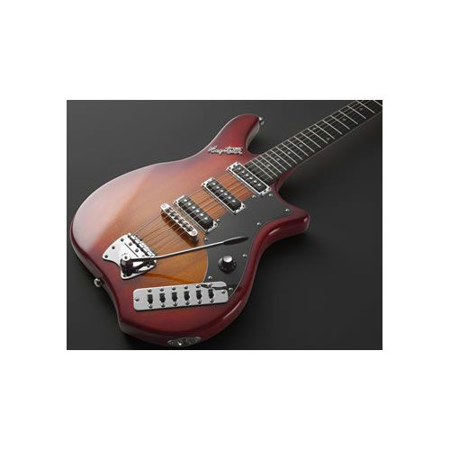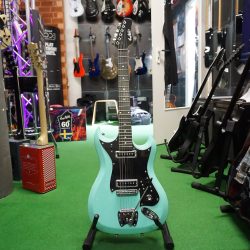


Again, though that's easy enough to sort with a screwdriver, the bridge still does sound a little thin. Each of the three single coils have the same output, and the bridge unit is some way from the strings. Mind you, a quick unplugged strum doesn't bode too well, with a rather plunky, quick decaying tone - not a million miles away from a Jaguar. All in all, it might have been conceived in the 60s as a Swedish 'Strat' but from a modern perspective it's quite a slice of retro. The black-faced Fender-y headstock is back-angled more like a Gibson, and the generic tuners at least have a Hagstrom logo and distinctively shaped buttons, while the logo is a moulded and silvered plastic.Īlong with a new version of Hagstrom's Tremar vibrato (and a roller-saddle tune-o-matic), the H-III's major calling card is the plethora of switches. The neck employs a modern version of Hagstrom's H-Expander truss rod (highly regarded, by the way, for the way it prevents the neck from twisting), its back is quite heavily glossed while the fingerboard is what Hagstrom calls Resinator (a synthetic substance that we suspect is similar to the Richlite used by Godin and Martin, for example). Tone-shaping functionality is enhanced by incorporating Hagstrom’s new RC-Circuit into the volume control, which allows for volume reduction without the loss of that high frequency “shimmer”.The 'Strat in Gibson clothes' vibe continues with a shorter Gibson scale length. Hagstrom has taken great care in recreating the original pickups, and the new cera mic „C-Spin“ pickups do an excellent job of matching the originals’ sonic glory. The classic 6-in-line Hagstrom headstock design, used for the first production of H-IIs and H-IIIs, has been slightly updated, and the “Vintage Tremar” has been re-engineered for functional improvements without sacrificing its original appearance. Let me outĪ comfortably profiled Canadian Maple neck is bolted to a hand-selected American Alder body insuring that the original attack and “bite” of the H-II and H-III is maintained. Many people have been asking for these classics to be re-issued, and we at Hagstrom are happy to comply with lovingly recreated and updated versions of these great classics. Favorites among punk and grunge bands looking for a hard-rocking individualist statement, H-IIs and H-IIIs have been showing up in the hands of artists such as Aaron North (The Icarus Line, Nine Inch Nails) for years.

Known for their quirky switches and easy playability, they quickly achieved wide popularity. The H-II and H-III were introduced in 1965, so 2015 marks the 50th anniversary of these iconic guitars.


 0 kommentar(er)
0 kommentar(er)
